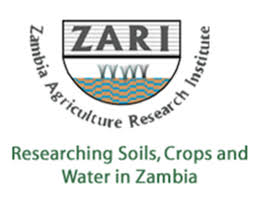
Blog
-
Geiger Readings for Mar 29, 2017
Ambient office = 88 nanosieverts per hourAmbient outside = 82 nanosieverts per hourSoil exposed to rain water = 83 nanosieverts per hourOrange bell pepper from Central Market = 95 nanosieverts per hourTap water = 138 nanosieverts per hourFilter water = 122 nanosieverts per hour -
Zambia Working To Improve Agriculture With Nuclear Science – Part 2 of 2 Parts
Part Two of Two Parts (Please read Part One first)
ZARI projects are working to develop stable, high-yield and superior storage crops. Beyond pests and disease resistance, ZARI is also working on crops that can survive adverse conditions such as drought or soil with high acidity. Ghana in northwest Africa has already used nuclear radiation to mutate the genes of cocoa plants in the hopes of producing hardier plants. This same technique could be used in Zambia to produce hardier crops.
Once crops have been harvested, radiation can be used to kill any microorganisms and increase the shelf life of the crop. It is claimed that the use of radiation to treat harvested crops produces “negligible changes caused to the products in terms of appearance, taste and nutritional value compared to regular preservation methods.” Such irradiation does not make the food radioactive.
It is estimated that over seventy-five billion tons of soil are eroded each year from global agricultural areas. It is mainly the top soil that is eroded each year. Plants get most of their water and nutrients from top soil. Nuclear technology has been utilized to track and mitigate the rate and scale of soil erosion in any particular area. Zambia loses about three hundred hectares of its forests every year. Rainfall patterns in Zambia have become increasingly erratic in recently. There are long dry spells and then heavy downpours which have combined to increase erosion and erosion-prone areas. Heavy erosion can lead to the silting up of hydro-electric reservoirs seriously reducing energy production. Use of nuclear techniques have helped to reduce erosion as much as sixty percent in some areas of other African nations.
Nuclear isotopes can be used to measure the ability of a particular soil sample to store water and nutrients. The level of fertilizers and pesticide waste can also be measured by such techniques. The nation of Benin in northwest Africa has used such techniques to improve crop yields while reducing fertilizer and pesticide use. Applied in Zambia, such techniques could increase crop yields and save money.
The Food and Agriculture Organization (FAO) is an intergovernmental organization that has a presence in one hundred and thirty countries. It is a specialized agency of the U.N. leading international efforts to reduced world-wide hunger. “It is also a source of knowledge and information and helps developing countries in transition modernize and Improve agriculture, forestry and fisheries practices, ensuring good nutrition and food security for all.” The International Atomic Energy Agency is the “world’s center for cooperation in the nuclear field, promoting the safe, secure and peaceful use of nuclear technology and inhibiting its use for any military purpose, including nuclear weapons.” With the creation of the Centre for Nuclear Science and Technology, Zambia is on track to join with seventy other countries that are partnering with the FAO and the IAEA in the use of nuclear science and technology to advance food safety.
Cooperation with these countries and organizations could help Zambia expand its agricultural sector. This could, in turn, generate billions of dollars in national income and thousands of jobs. This Zambian nuclear project could become a major turning point with respect to Zambia’s economy. Zambia could become a regional food basket.
-
Geiger Readings for Mar 28, 2017
Ambient office = 116 nanosieverts per hourAmbient outside = 105 nanosieverts per hourSoil exposed to rain water = 100 nanosieverts per hourOrganic avocado from Central Market = 59 nanosieverts per hourTap water = 88 nanosieverts per hourFilter water = 79 nanosieverts per hour -
Zambia Working To Improve Agriculture With Nuclear Science – Part 1 of 2 Parts
Part One of Two Parts
Zambia is a land-locked nation in south central Africa. It occupies almost three hundred thousand square miles and has a population of about sixteen million five hundred thousand people. The agricultural sector of the Zambian economy provides about six and a half percent of the national GDP. It accounts for just under ten percent of the nation’s exports. The agricultural sector employs about half of the Zambian labor force. Despite these facts, the agricultural industry is the least developed industry in Zambia and it has huge growth potential.
The Zambia Agriculture Research Institute (ZARI), is a program of the Zambian Agricultural Ministry. ZARI is currently operating multiple research projects. The primary objective of the ZARI research projects is to “…provide a high quality, appropriate and cost-effective service to farmers in generating and adapting crop, soil and plant protection technologies.” There is great opportunity to advance agriculture in Zambia through science and technology.
Zambia recently signed an agreement with the Russia-owned firm Rosatom to create a new Centre for Nuclear Science and Technology (CNST) in Lusaka, the Zambian capital. This new project is expected to help Zambia with its energy problems through the construction of nuclear power reactors. Water levels in its hydro-electric dams have been at record lows recently and power rationing can be in effect for as much as fourteen hours a day. Beyond the use of nuclear technology for energy generation, many techniques have developed with nuclear science for soil conservation and agricultural development.
One major use of nuclear science in agriculture has been dealing with pests that threaten crops. Pests can spread diseases that can reduce crop yields by forty percent or more costing millions of dollars. Currently, spraying pesticides is a major response to pests but these pesticides often have a negative impact on the environment. Toxic residues can remain on plants and be passed to human beings. In addition, as pests develop resistance to popular pesticides, more powerful and toxic pesticides must be used.
The Sterile Insect Technique (SIT) has been used in Australia to control fruit fly infestations. The SIT employs nuclear radiation from commercial isotopes to sterilize millions of female fruit flies raised in a laboratory. Next, the sterile flies are released into the wild in the targeted area to mate with wild male fruit flies. Because the sterile female flies produce no offspring, the overall population of fruit flies drops, reducing the threat to crops. The irradiated flies pose no threat to the environment because the treatment does not make them radioactive.
In Zambia, Tsetse flies are a serious problem that impacts livestock as well as the human population by spreading sleeping sickness, a disease that affect both animals and humans and can be fatal. The UN estimates that the sleeping sickness spread by the flies kills as many as three million animals every year with an estimated cost of four billion dollars. The SIT could be the solution to the problems posed by the Tsetse flies.
Please read Part Two
Zambian flag:
-
Geiger Readings for Mar 27, 2017
Ambient office = 84 nanosieverts per hourAmbient outside = 93 nanosieverts per hourSoil exposed to rain water = 91 nanosieverts per hourOrganic carrot from Central Market = 103 nanosieverts per hourTap water = 55 nanosieverts per hourFilter water = 39 nanosieverts per hour -
Radioactive Waste 334 – Holtec Design Changes For San Onofre Dry Casks Slows Decommissioning
I have often blogged about the problem of spent nuclear fuel assemblies that are piling up in the cooling pools of U.S. nuclear reactors. There is no permanent geological repository for spent nuclear fuel in the U.S. The attempt to build such a repository at Yucca Mountain in Nevada was cancelled in 2009 although there are members of Congress who are trying to get that project going again. The only path forward seems to be the creation of interim storage facilities with dry casks to hold spent nuclear fuel assemblies.
After the San Onofre nuclear power plant in San Diego, CA was shut down, the spent nuclear fuel had to be dealt with. Following a great deal of debate and discussion, it was decided to store the spent nuclear fuel in dry casks called HI-STORM UMAX constructed by Holteck International. They are a well-known dry cask company and brag about how advanced their HI-STORM UMAX dry casks are.
South California Edison (SCE), the owners of the San Onofre nuclear power plant, are responsible for the decommissioning of the old nuclear power plant. This includes dealing with the spent nuclear fuel. A few weeks ago, SCE technicians were loading spent nuclear fuel assemblies into HI-STORM UMAX dry casks when they discovered a loose pin at the bottom of aluminum shims. The shims are supposed to provide space for helium gas to flow around the fuel assemblies to cool them. SCE stopped loading spent fuel assemblies into the casks for a week while they explored this finding.
Holtec engineers informed SCE that they had made a design change to some of the HI-STORM UMAX dry casks supplied to SCE. SCE has requested that Holtec provide SCE with all the information they have on the design change. They have also requested that Holtec run thorough tests on the design change and inform SCE of the results.
It turns out that of the seventy three dry casks Holtec has supplied to SCE for San Onofre, thirty of the casks conform to the original design for the UMAX series while the remain forty three cask have the new design where the problem was discovered. SCE has resumed loading spent fuel assemblies into the casks with the original design which is widely used in the construction of dry casks.
Ray Lutz is with the watchdog group, Citizens Oversight. He said “It’s pretty worrisome that the first four canisters that they loaded, already, we’re notified that they are having these defects, and now, when they were asked, ‘Can we open them up and replace these parts?’ they said, ‘No, no one has ever opened these canisters up, we don’t know how to do it — it would take years of research.”
SCD began the task for removing hundreds of spent fuel assemblies stored in the cooling pool at San Onofre this January. The spent fuel assemblies are being inserted into the dry casks which are partially buried after being encased in concrete. The casks are stored next to the beach at San Onofre. A citizen’s group has asked for a permanent monitoring system around the casks to detect any leakage of radioactive materials. A new panel has just been appointed to consider how and where to store the spent fuel.
-
Geiger Readings for Mar 26, 2017
Ambient office = 82 nanosieverts per hourAmbient outside = 128 nanosieverts per hourSoil exposed to rain water = 125 nanosieverts per hourBartlett pear from Central Market = 180 nanosieverts per hourTap water = 111 nanosieverts per hourFilter water = 102 nanosieverts per hour






